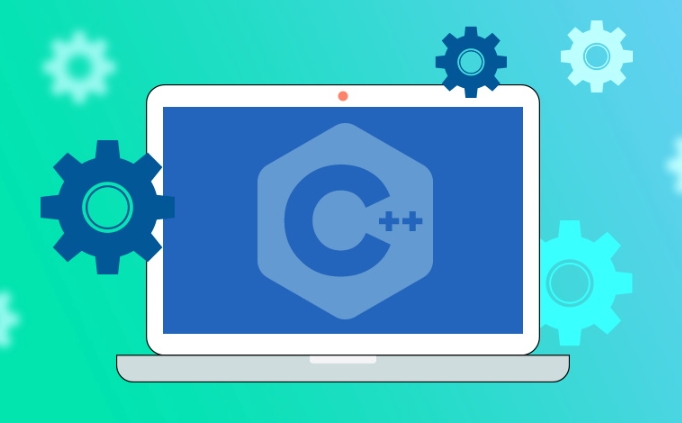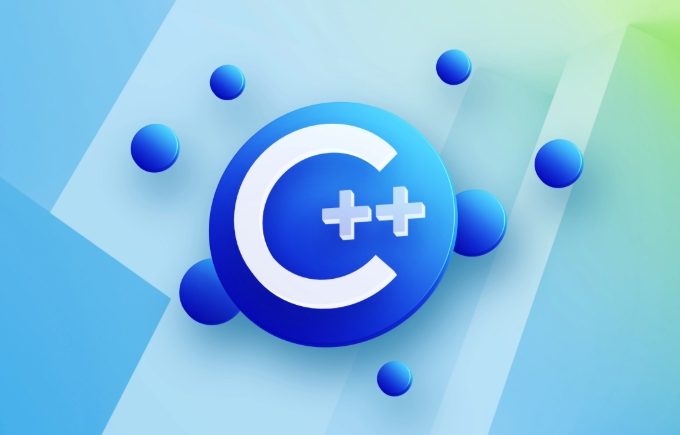The system endianness can be detected by a variety of methods, the most commonly used is the union or pointer method. 1. Use the union: Assign uint32_t to 0x01020304. If the lowest address byte is 0x04, it is a small-endian, and if it is 0x01, it is a big-endian; 2. Use pointer conversion: Assign uint16_t to 0x0102, read the byte order through the uint8_t pointer, [0]==0x02 and [1]==0x01 is a small-endian, otherwise it is a big-endian; 3. Compilation-time detection: define the constexpr function to determine whether the (char)&int variable is 1, and combine if constexpr to determine the endian sequence during the compilation period; 4. Runtime macro encapsulation: Use (char*)&int to determine whether the lowest address byte is 1, and then it is a small-endian. Modern x86/x64 is mostly small-endian, and network protocols use big-endian, and ARM is usually small-endian. Combinations and pointer methods are widely applicable, and it is recommended to encapsulate as functions or constexpr to improve portability and security.

Detection of system endianness in C is a common requirement, especially when dealing with cross-platform data exchange or binary/network protocol parsing. Here is a simple, portable example of whether the current system is Big-Endian or Little-Endian.

? Method 1: Use union to judge
This is the most common and efficient way to take advantage of the features of union shared memory:
#include <iostream>
int main() {
union {
uint32_t i;
uint8_t c[4];
} u = {0x01020304};
if (uc[0] == 0x04) {
std::cout << "Little Endian\n";
} else if (uc[0] == 0x01) {
std::cout << "Big Endian\n";
} else {
std::cout << "Unknown Endianness\n";
}
return 0;
}illustrate:

- Set the value of
uint32_tto0x01020304 - In small-endian systems, the low bytes are stored at the low address, so
c[0]is0x04 - In big-endian systems, high bytes are stored at low addresses, so
c[0]is0x01
? Method 2: Use pointer to cast type
#include <iostream>
int main() {
uint16_t value = 0x0102;
uint8_t* ptr = reinterpret_cast<uint8_t*>(&value);
if (ptr[0] == 0x02 && ptr[1] == 0x01) {
std::cout << "Little Endian\n";
} else if (ptr[0] == 0x01 && ptr[1] == 0x02) {
std::cout << "Big Endian\n";
} else {
std::cout << "Unknown\n";
}
return 0;
} This method has a similar principle, but does not use union , but accesses the bytes of an integer through a pointer.
? Method 3: Compile-time detection (C 17 and above)
If you want to make a judgment during the compilation period, you can use constexpr :

#include <iostream>
constexpr bool is_little_endian() {
int x = 1;
return *reinterpret_cast<char*>(&x) == 1;
}
int main() {
if constexpr (is_little_endian()) {
std::cout << "Little Endian (compile-time)\n";
} else {
std::cout << "Big Endian (compile-time)\n";
}
return 0;
} This method is effective on compilers that support constexpr pointer dereferences (such as GCC and Clang usually support).
?? Notes
- Most modern x86/x64 architectures are small-endian
- Network protocols usually use big endian (also called network endianness)
- The ARM architecture is configurable, but it usually runs in small-endian mode.
- Don't rely on undefined behavior: using
unionis allowed in C, which may be considered undefined behavior in some cases (but mainstream compilers support it)
? More secure runtime detection macro (recommended encapsulation)
#include <iostream>
bool is_little_endian() {
int num = 1;
return (*(char*)&num == 1);
}
int main() {
std::cout << (is_little_endian() ? "Little Endian" : "Big Endian") << std::endl;
return 0;
}Basically that's it. Which method to choose depends on whether you need to make a compilation period judgment, whether you pursue portability, or whether you are used in an embedded environment. The most commonly used are the union or pointer method.
The above is the detailed content of C endianness check example. For more information, please follow other related articles on the PHP Chinese website!

Hot AI Tools

Undress AI Tool
Undress images for free

Undresser.AI Undress
AI-powered app for creating realistic nude photos

AI Clothes Remover
Online AI tool for removing clothes from photos.

Clothoff.io
AI clothes remover

Video Face Swap
Swap faces in any video effortlessly with our completely free AI face swap tool!

Hot Article

Hot Tools

Notepad++7.3.1
Easy-to-use and free code editor

SublimeText3 Chinese version
Chinese version, very easy to use

Zend Studio 13.0.1
Powerful PHP integrated development environment

Dreamweaver CS6
Visual web development tools

SublimeText3 Mac version
God-level code editing software (SublimeText3)
 What is high-frequency virtual currency trading? The principles and technical implementation points of high-frequency trading
Jul 23, 2025 pm 11:57 PM
What is high-frequency virtual currency trading? The principles and technical implementation points of high-frequency trading
Jul 23, 2025 pm 11:57 PM
High-frequency trading is one of the most technologically-rich and capital-intensive areas in the virtual currency market. It is a competition about speed, algorithms and cutting-edge technology that ordinary market participants are hard to get involved. Understanding how it works will help us to have a deeper understanding of the complexity and specialization of the current digital asset market. For most people, it is more important to recognize and understand this phenomenon than to try it yourself.
 C vector get first element
Jul 25, 2025 am 12:35 AM
C vector get first element
Jul 25, 2025 am 12:35 AM
There are four common methods to obtain the first element of std::vector: 1. Use the front() method to ensure that the vector is not empty, has clear semantics and is recommended for daily use; 2. Use the subscript [0], and it also needs to be judged empty, with the performance comparable to front() but slightly weaker semantics; 3. Use *begin(), which is suitable for generic programming and STL algorithms; 4. Use at(0), without manually null judgment, but low performance, and throw exceptions when crossing the boundary, which is suitable for debugging or exception handling; the best practice is to call empty() first to check whether it is empty, and then use the front() method to obtain the first element to avoid undefined behavior.
 How to develop AI-based text summary with PHP Quick Refining Technology
Jul 25, 2025 pm 05:57 PM
How to develop AI-based text summary with PHP Quick Refining Technology
Jul 25, 2025 pm 05:57 PM
The core of PHP's development of AI text summary is to call external AI service APIs (such as OpenAI, HuggingFace) as a coordinator to realize text preprocessing, API requests, response analysis and result display; 2. The limitation is that the computing performance is weak and the AI ecosystem is weak. The response strategy is to leverage APIs, service decoupling and asynchronous processing; 3. Model selection needs to weigh summary quality, cost, delay, concurrency, data privacy, and abstract models such as GPT or BART/T5 are recommended; 4. Performance optimization includes cache, asynchronous queues, batch processing and nearby area selection. Error processing needs to cover current limit retry, network timeout, key security, input verification and logging to ensure the stable and efficient operation of the system.
 C bit manipulation example
Jul 25, 2025 am 02:33 AM
C bit manipulation example
Jul 25, 2025 am 02:33 AM
Bit operation can efficiently implement the underlying operation of integers, 1. Check whether the i-th bit is 1: Use n&(1
 C Standard Library Explained
Jul 25, 2025 am 02:11 AM
C Standard Library Explained
Jul 25, 2025 am 02:11 AM
The C standard library helps developers improve code quality by providing efficient tools. 1. STL containers should be selected according to the scene, such as vector suitable for continuous storage, list suitable for frequent insertion and deletion, and unordered_map is suitable for fast search; 2. Standard library algorithms such as sort, find, and transform can improve efficiency and reduce errors; 3. Intelligent pointers unique_ptr and shared_ptr effectively manage memory to avoid leakage; 4. Other tools such as optional, variant, and function enhance code security and expressiveness. Mastering these core functions can significantly optimize development efficiency and code quality.
 C function example
Jul 27, 2025 am 01:21 AM
C function example
Jul 27, 2025 am 01:21 AM
Functions are the basic unit of organizing code in C, used to realize code reuse and modularization; 1. Functions are created through declarations and definitions, such as intadd(inta,intb) returns the sum of the two numbers; 2. Pass parameters when calling the function, and return the result of the corresponding type after the function is executed; 3. The function without return value uses void as the return type, such as voidgreet(stringname) for outputting greeting information; 4. Using functions can improve code readability, avoid duplication and facilitate maintenance, which is the basic concept of C programming.
 Understanding the C ABI
Jul 24, 2025 am 01:23 AM
Understanding the C ABI
Jul 24, 2025 am 01:23 AM
C ABI is the underlying rule that the compiler follows when generating binary code, which determines mechanisms such as function calls, object layout, name adaptation, etc. 1. It ensures that different compilation units interact correctly, 2. Different compilers or versions may adopt different ABIs, affecting dynamic library links, STL transfers, virtual function calls, etc. 3. Cross-platform development, long-term system maintenance, third-party library use and other scenarios need to pay special attention to ABI consistency, 4. ABI can be controlled through macro definitions and compilation options, and use tools to view the symbol table to judge consistency.
 C std::is_same example
Jul 24, 2025 am 03:22 AM
C std::is_same example
Jul 24, 2025 am 03:22 AM
std::is_same is used to determine whether the two types are exactly the same at compile time and return a bool value. 1. In the basic usage, std::is_same::value is true when T and U are exactly the same, otherwise it is false. Different modifiers such as const, reference, pointer, etc. will cause false; 2. You can remove the type modification with std::remove_const, std::remove_reference and other types, and then compare it to achieve more flexible type judgment; 3. It is often used in template metaprogramming in practical applications, such as conditional compilation with ifconstexpr, and perform different logic according to different types; 4.






